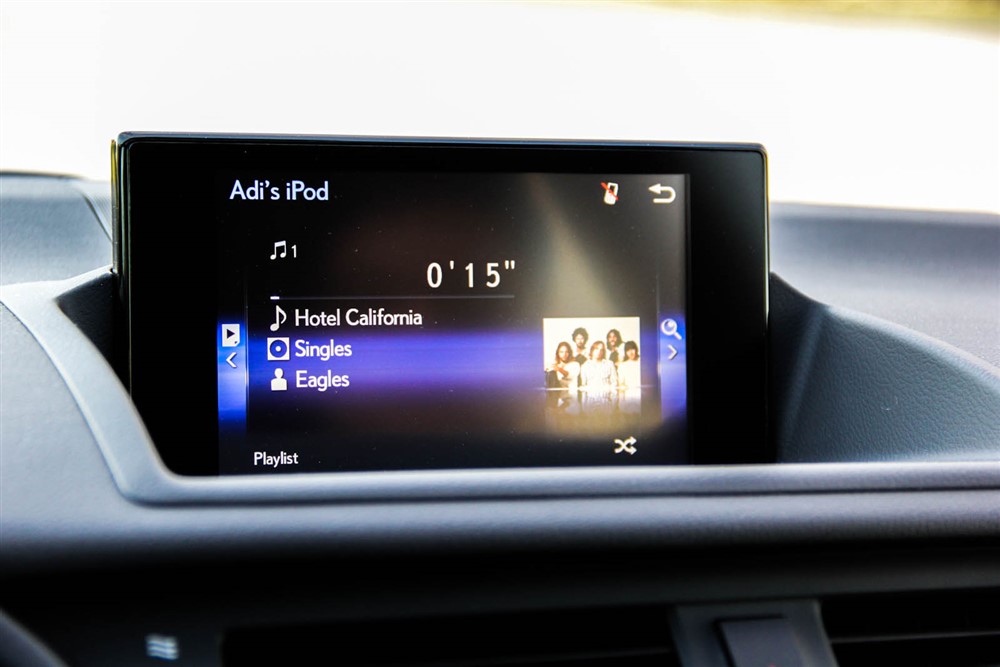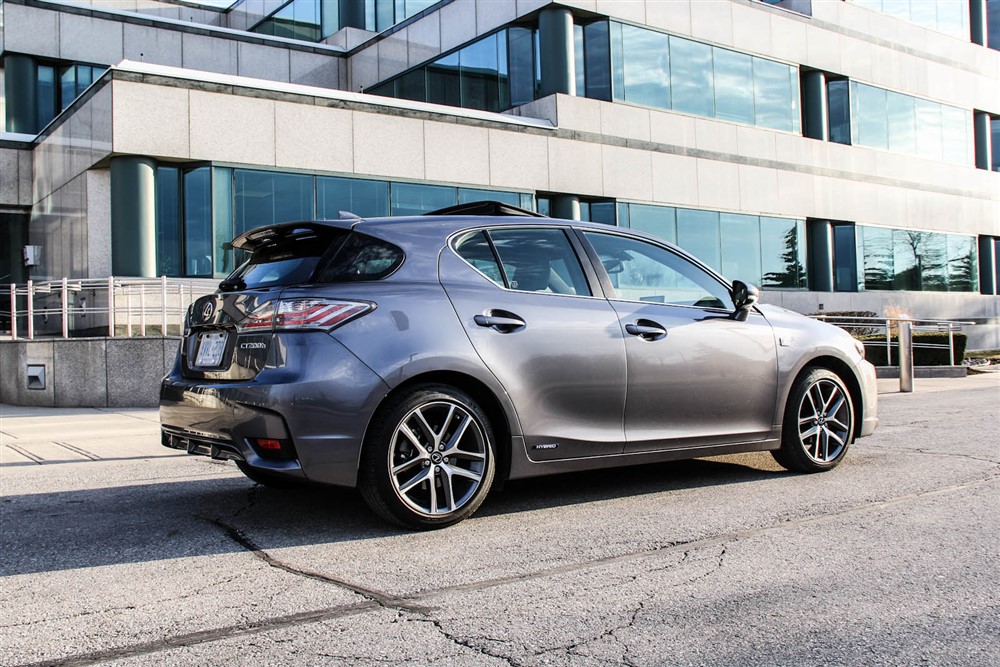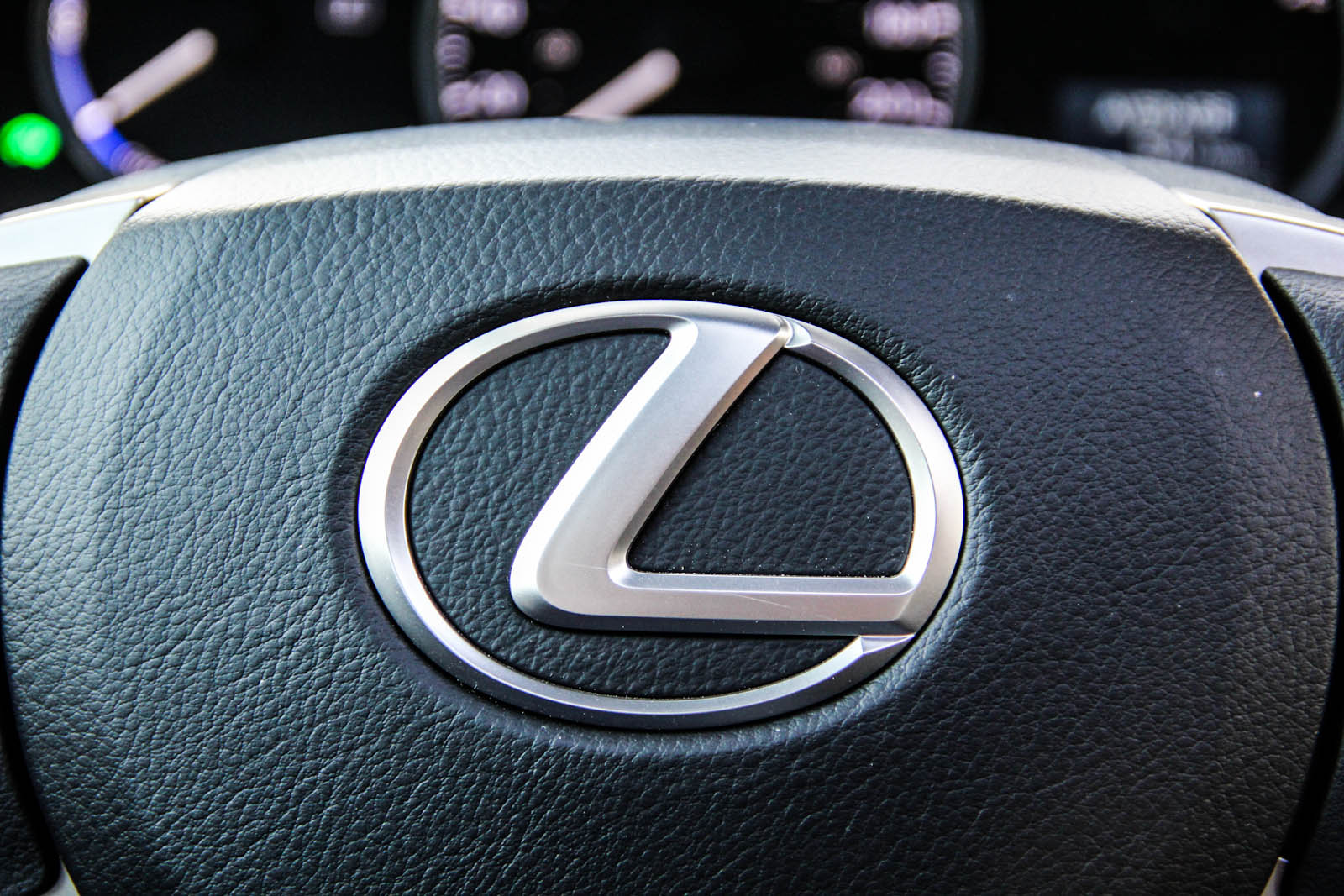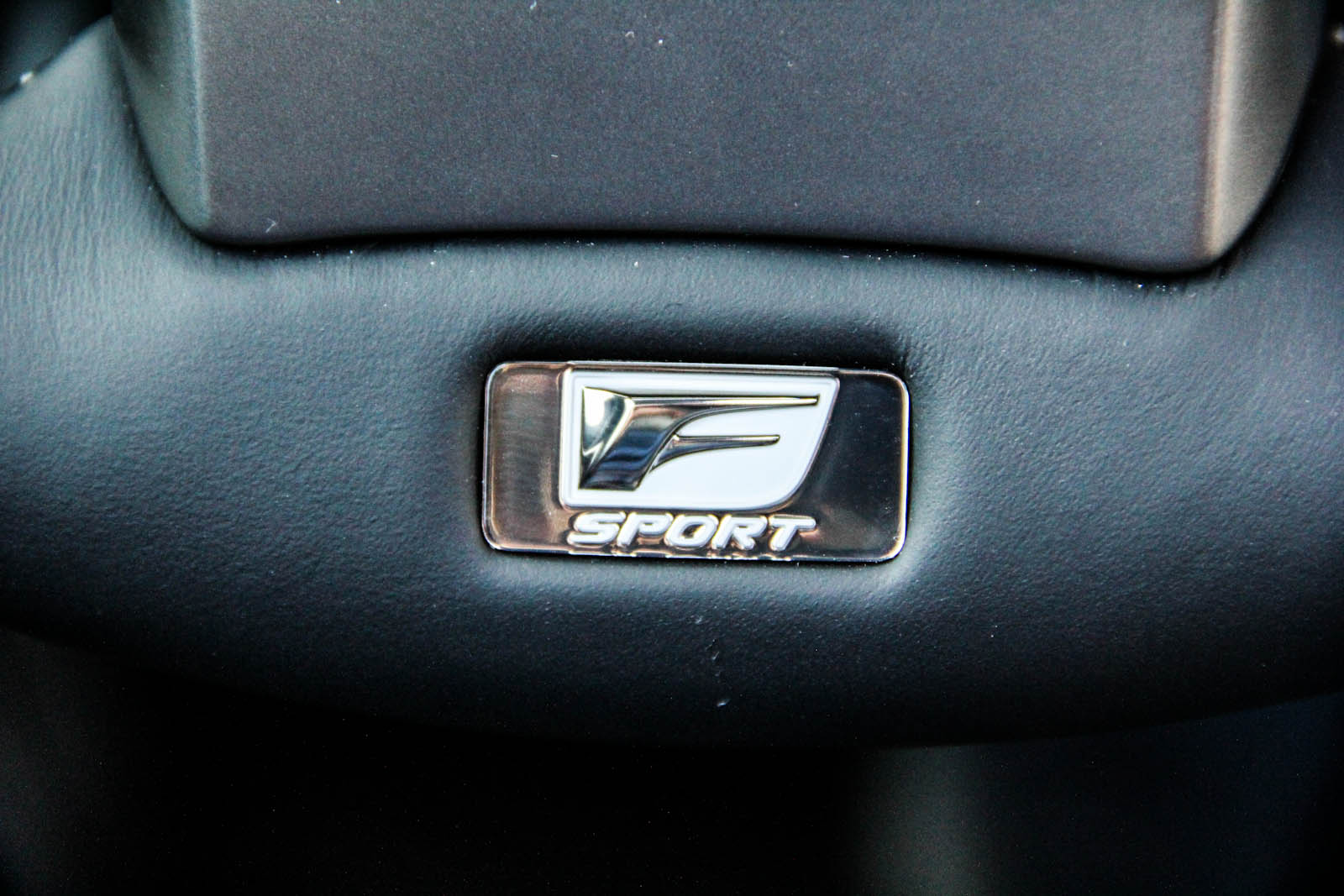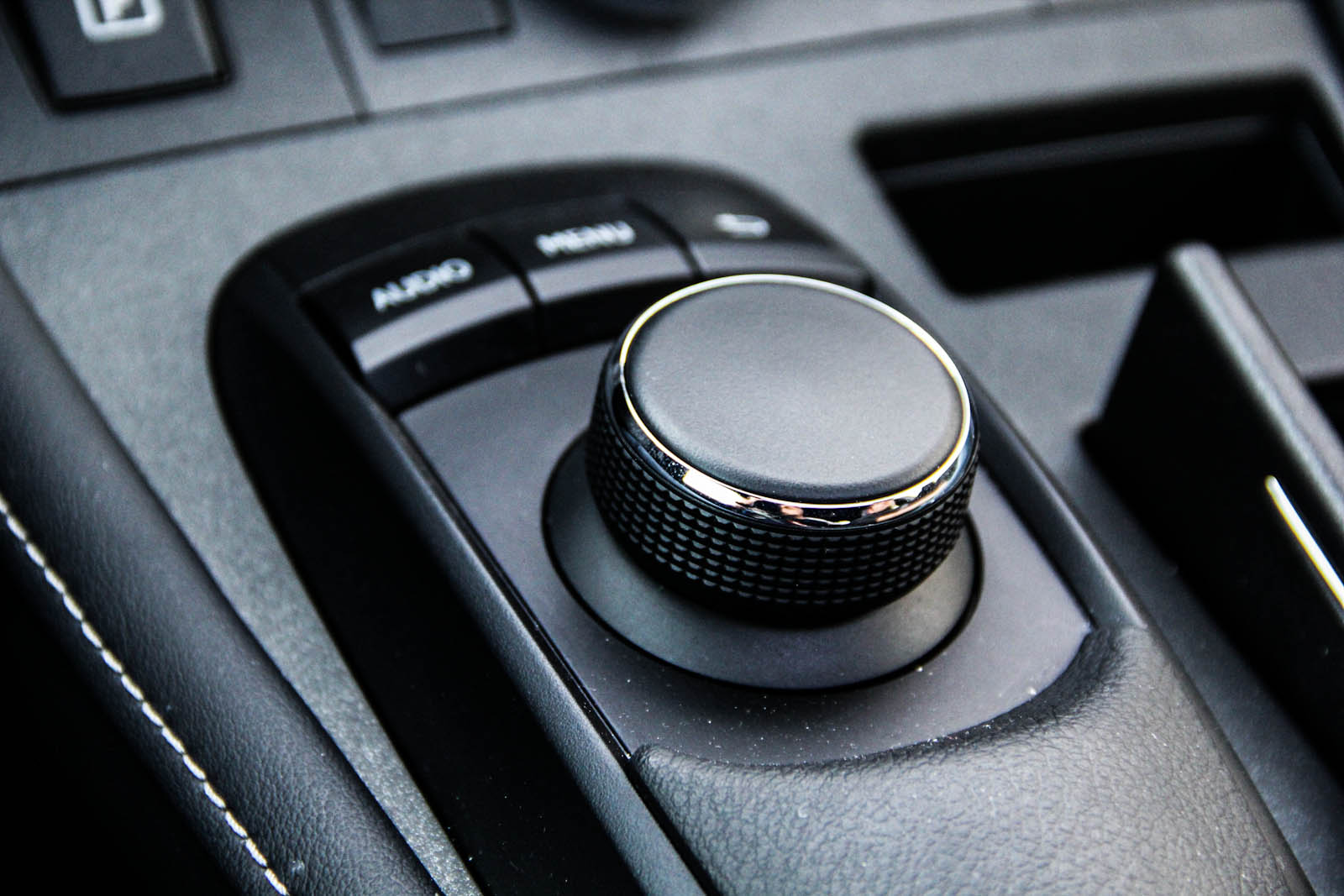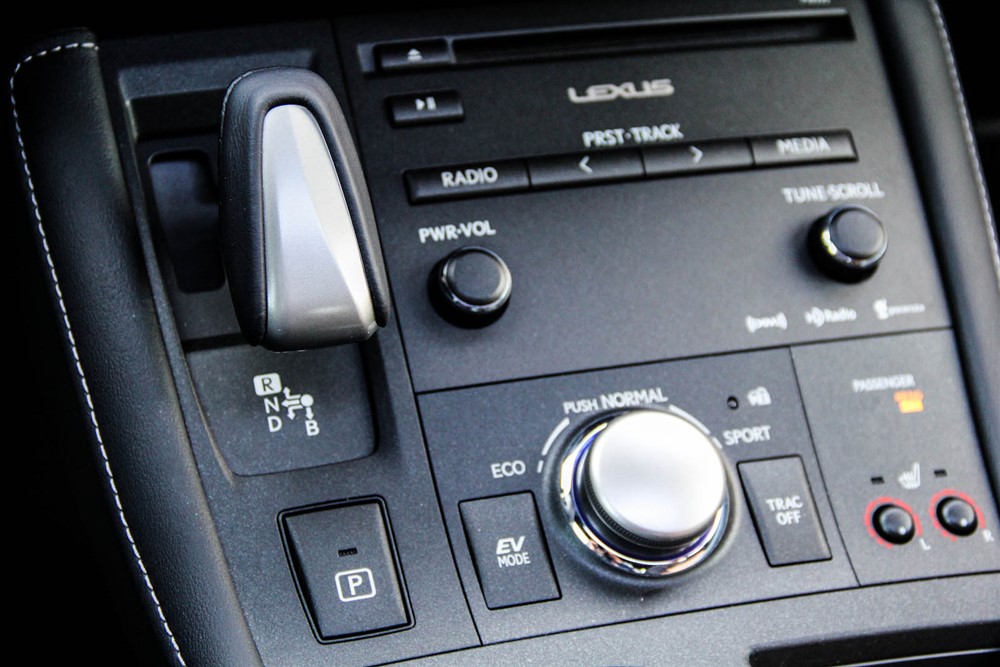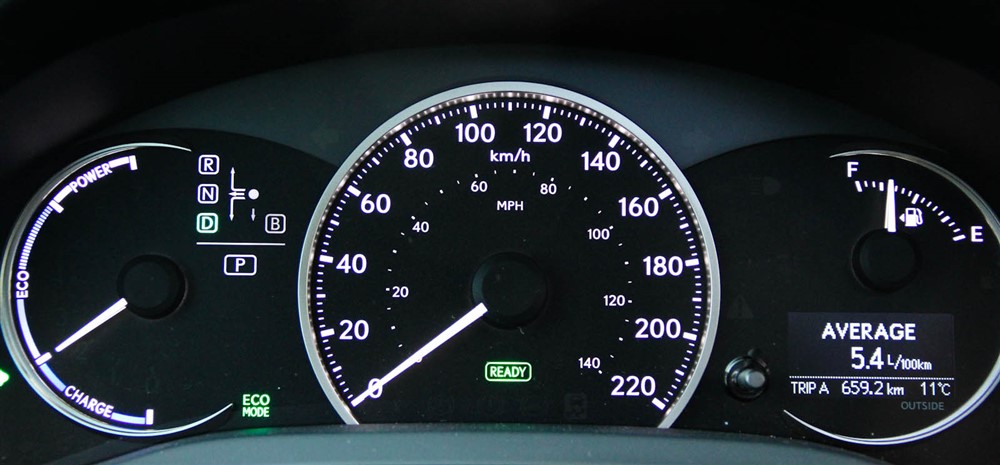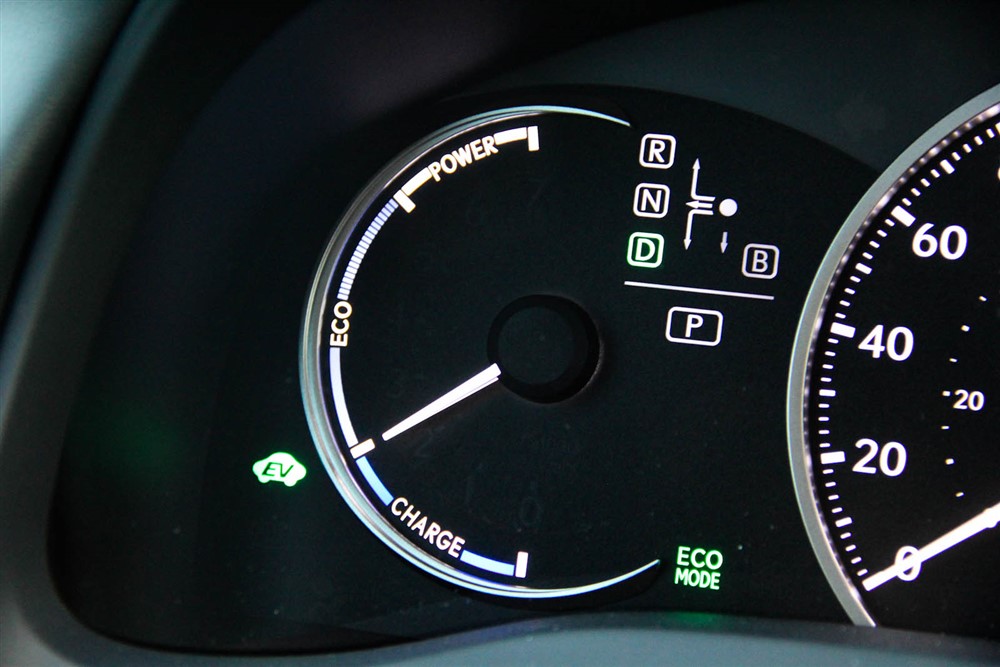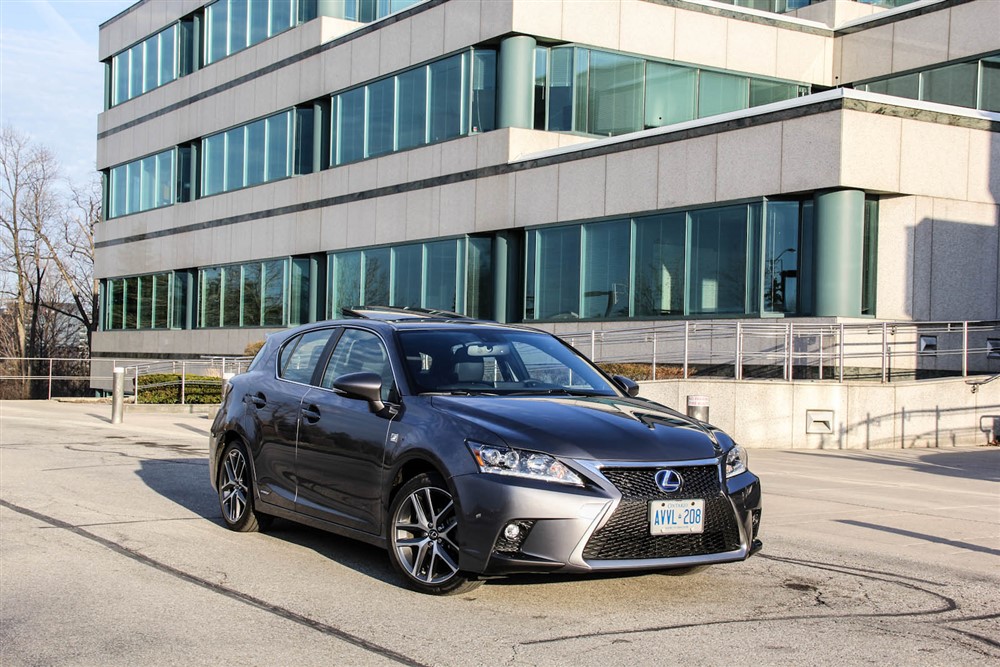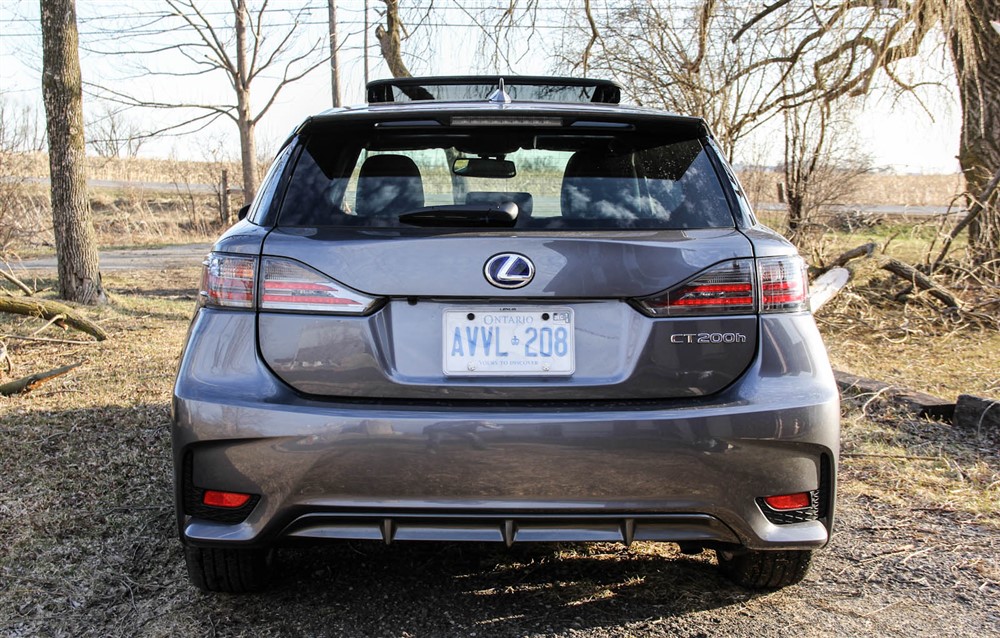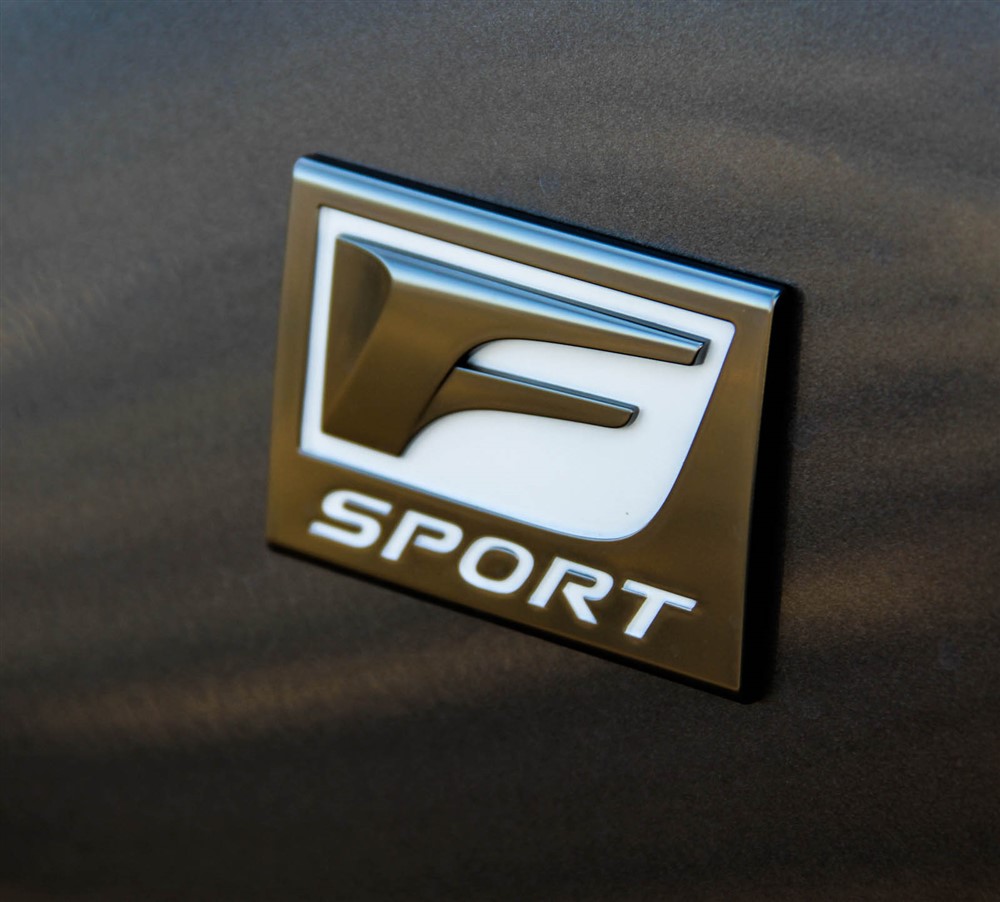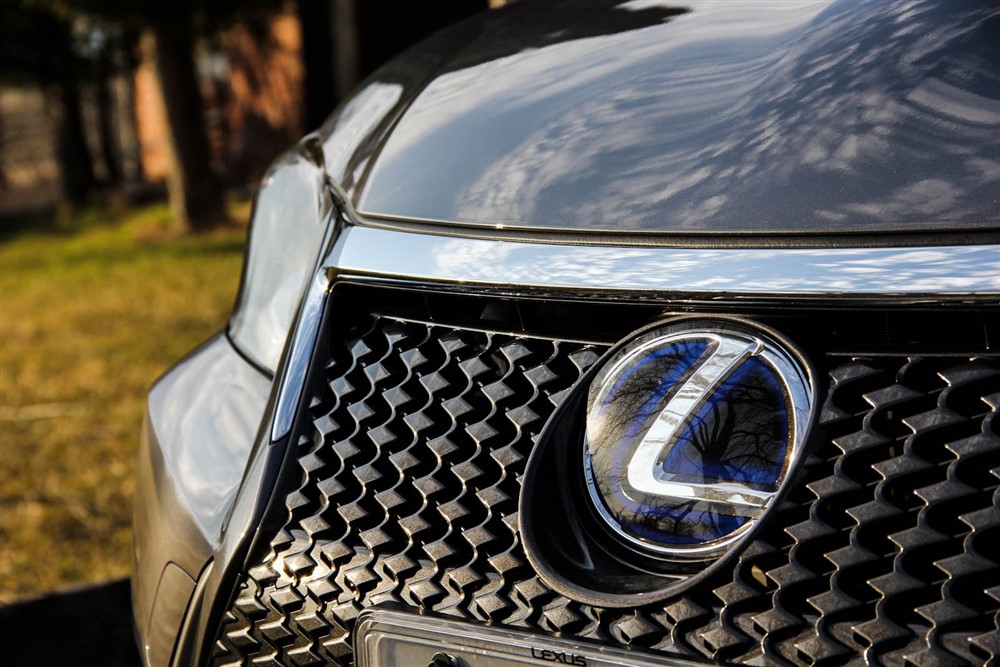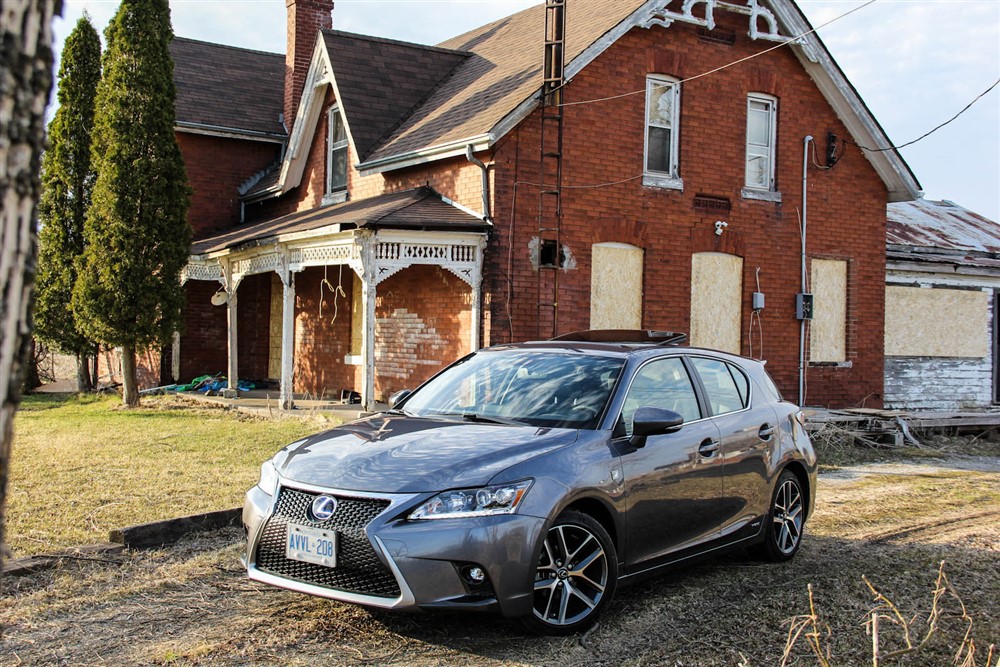This model year, Lexus gave its compact hatch, the CT200h, a front-end facelift. It now shares the corporate spindle grille with the fabulous new IS and GS. I personally think it looks spectacular, and took every chance I could to mention it to friends and acquaintances I came across during my time with the car. The problem is, nearly everyone I spoke with assumed that the CT is nothing more than a Prius with a Lexus badge. I’ll have to admit, when I first heard about this model a couple years ago, I shared this sentiment. A week with the 2014 Lexus CT200h F-Sport helped me learn exactly why this car is so important in the segment and our society as a whole.
Over the past couple years, Lexus has become one of the most versatile automakers out there. The new IS350 F-Sport rocked my expectations and went on to win our “Favourite Sports Sedan” award, and the GS350 is a chameleon that’s just as capable of being a big sports sedan (RWD F-Sport) as it is being a cushy highway hauler (AWD with Luxury Package). Lexus calls the CT200h a “hybrid luxury sport-back”, and they aren’t wrong. It’s pretty comfortable, decently luxurious, and definitely looks the part of a sporty hatchback. The question is; does the “go” of this F-Sport model back up the “show”?
The CT200h shares the majority of its powertrain with the Prius, and that’s not a bad thing. The engine is a 1.8L 4-cylinder coupled to an electric motor; combined horsepower is a decent 134. This hatchback isn’t quick by any means, but booting around the city is effortless with the added torque from the electric motor. We had a first-generation Camry Hybrid in the family for a few years, and I always complained that it wouldn’t stay in full EV mode long enough. This CT200h has a marked “EV Mode” button that actually holds it in EV mode for a few kilometres. Provided you’re very light on the throttle and aren’t driving on the highway, it’s not difficult for the average joe to extract efficiency out of it.
It’s actually next to impossible to get poor fuel mileage with the CT200h. The average flow of traffic on the 400-series highways is around 120 km/h. The CT is actually at its most comfortable around the 105 km/h mark, and I had no problems keeping it there. I averaged 5.4L/100km in combined driving, not too far from the 4.6L/100km Lexus suggests. If my commute was all city and I drove it in “Eco” mode, it wouldn’t be too hard to keep this loveable hatchback just below 5L/100km. It’s important to note that the CT does drink a little bit more gas than its Prius sibling, and this is because it is significantly heavier. The added engineering, luxury features, and overall “Lexus-ification” of the CT does add a bit of weight, and it’s not something I’m against. The car feels much more substantial, and this is a very good thing.
With a starting price in the $30,000 range, my CT200h F-Sport had the optional F-Sport package (an extra $7,450). Other than a more aggressive styling kit on the exterior and some attractive F-Sport wheels, the most notable feature here for me was the addition of the F-Sport seats. They are exceptionally good and make the car feel significantly more upscale. The dampers are also tweaked for better handling and a better ride, and this is noticeable; the CT is surprisingly planted around the corners, something that has always been a weakness of the Prius.
The infotainment system in this particular CT200h is decently good. Despite the excellent-quality screen that is capable of displaying album art, my tester did not have navigation. That’s okay – it does Bluetooth audio and my iPhone does navigation, so getting turn-by-turn directions isn’t difficult at all. The system is decent to navigate, but I can’t wait for the update until the CT shares the lovely Remote Touch Interface with the rest of the Lexus lineup. It’s one of my favourite systems in the industry. One problem I couldn’t find a solution to is that the system wasn’t as responsive as I would have liked with my 160GB iPod Classic. It was, however, perfectly fine with iPod Touch and iPhone.
This little hatchback is surprisingly quiet on the highway for such a small car. Typically with compacts, I find a tedious amount of wind noise at higher speeds, but not here. I will say though that the design of the car around the c-pillar makes for a larger blind spot than I’d like. It’s forgivable because of the polarizing nature of the CT, but lane changes should always be made with additional caution. The headlights on the car are also particularly nice; the Lexus corporate LED strips are very nicely executed and add a nice touch. Something that might be interesting is if Lexus chose to sell an F-Sport model of this car with a small 4-cylinder with a turbo and maybe a manual transmission. The styling and driving dynamics are there to make a seriously competitive hot hatch to compete with the likes of the Volkswagen GTI.
I’ve advocated in the past that diesels make a bit more sense than hybrids, but after spending a week booting around the urban sprawl that is the Greater Toronto Area with one of the best hybrids on the market, I can’t help but wish I could retract my words. Diesels do make a ton of sense if you’re constantly making highway drives; long ranges and smoothness are great. However, the responsiveness and overall city efficiency of a solid hybrid system (Toyota’s Hybrid Synergy Drive is a great example) is simply perfect for an urban commuter. When I moved to the city a few years ago, I bought a first-generation Mini Cooper with a 5-speed manual transmission. If the CT200h existed then (and was available with three pedals), I probably would have bought one instead. This Lexus CT200h F-Sport is the perfect car for a city-slicker like me who cares about efficiency yet appreciates a car with great driving dynamics.
2014 Lexus CT200h F-Sport Review



